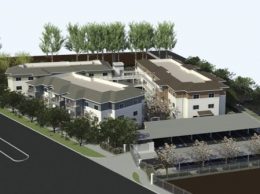Santa Barbara faces enforcement nightmare over short-term rentals
IN THIS ARTICLE
- Columns Topic
- pacbiztimes Author
By pacbiztimes Friday, November 20th, 2015
The city of Santa Barbara had it good.
It had been controversially collecting taxes on short-term rentals since 2008 even though most were illegally operating in certain residential zones. The city earned extra revenue and only had to crack down on a handful that neighbors deemed intolerable.
But the inherent conflict caught up with policy makers and city officials. Vastly growing technology like Airbnb forced its hand.
While formal complaints haven’t necessarily stacked up, the pressure on elected officials seemed to mount. Some residents had enough – enough noise, fewer parking spaces and traffic issues.
While several operators played by the rules and only rented to well-behaved travelers, it seemed that others ruined it for the lot.
The city is now faced with an enforcement nightmare.
Santa Barbara will play a proverbial game of Whack-A-Mole. It elected to proactively monitor 1,000-plus short-term rental listings, shut down those operating outside of commercial and R4 zones, and recover unpaid business license and transient occupancy tax. It will likely amend its zoning ordinance to permit homesharing rentals, or renting out part of a home while the owner is on site, similar to the city of San Luis Obispo.
As a result, the city of Santa Barbara will likely receive less tax revenue, spend more money dedicating staff time to proactively track unpermitted offenders and force more underground.
On one hand, some property owners need every dollar to live in Santa Barbara. On the other, short-term rentals are squeezing an already tight housing market.
Jurisdictions across the region, state and country must balance the needs of residents with potential tax revenue.
Santa Barbara expects an estimated $1.2 million in TOT taxes this year from vacation rentals – about $1.6 million next year. Ten percent of those taxes are unrestricted revenue and 2 percent are earmarked for creek restoration and water quality improvement. At the same time, officials in the Tri-Counties expect new hotels to offset any revenue loss.
“We have residents raising questions about our housing supply problem and degradation of quality of life,” said George Buell, Santa Barbara’s community development director.
While $1.2 million is a mere fraction of the $115 million general fund, collecting TOT on unpermitted rental units cushioned the financial void left by redevelopment agencies. RDAs throughout California received more than $5 billion in property tax revenues prior to their 2012 dissolution. Ending redevelopment changed how that was divvied up.
Unlike the cities of Santa Barbara, San Luis Obispo and Ventura, Ojai will likely ban short-term vacation rentals altogether. Carpinteria voted to stop permitting any new vacation rentals while figuring out how to regulate it.
Brian Johnson of real estate brokerage company Marcus & Millichap, which has an office in Oxnard, recommended allowing short-term vacation rentals in the most visited tourist draws, regardless of the zone.
Some of the ire from Santa Barbara residents stems from Santa Barbara City College expanding, he added.
As jurisdictions figure out how to regulate the industry, Airbnb continues to grow. It recently spent $8.5 million to defeat a potential San Francisco ballot measure that would’ve restricted short-term rentals.
It doesn’t look like Airbnb is slowing down.
Thousand Oaks center sold
A Thousand Oaks mixed-use shopping center at 757 E. Thousand Oaks Blvd. and a residence at 732 Greenwich Drive sold for $2.1 million.
The development has five parcels and 4,730 square feet of commercial space. There has been more activity along the boulevard since the city OK’d its Thousand Oaks Boulevard Specific Plan in 2011, which relaxes regulations to promote more workforce housing, said agent Cheri Blessing of Lee & Associates.
“The buyer, (a private investor), has previously purchased investment properties in the greater Los Angeles area, but sees the great potential in owning property in Thousand Oaks,” she said.
Mansions change hands
Two sprawling estates in Santa Barbara and Montecito sold for a combined $26.3 million.
The family of late investment banker Bruce Wasserstein sold their 12.5-acre property in Hope Ranch for $14 million. It first went on the market early this year for close to $20 million and was reduced to $16.9 million in July. The founders of the haircare product company Olaplex, Dean and Darcy Christal, purchased the property.
Say hello to Santa Barbara’s new little friend, Pradeep Yohanne Gupta, the CEO of private investment bank IQ Holdings. He purchased the Montecito mansion where “Scarface” was filmed for almost $12.3 million from financier Sergey Grishin. Grishin bought it in 2008 for about $20 million.
• Contact Alex Kacik at [email protected].
Related Articles
 Friday, October 14th, 2022
Friday, October 14th, 2022











